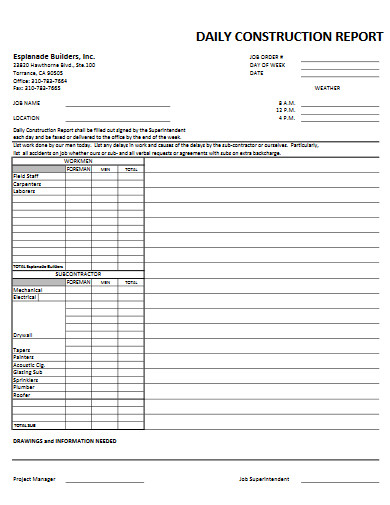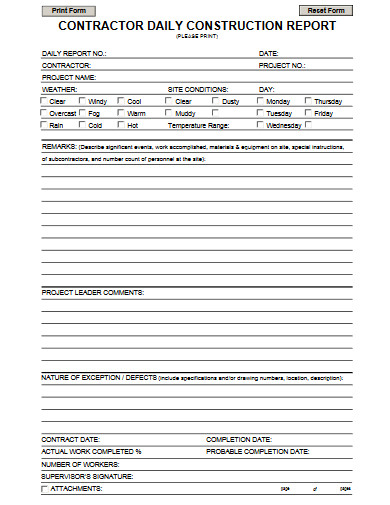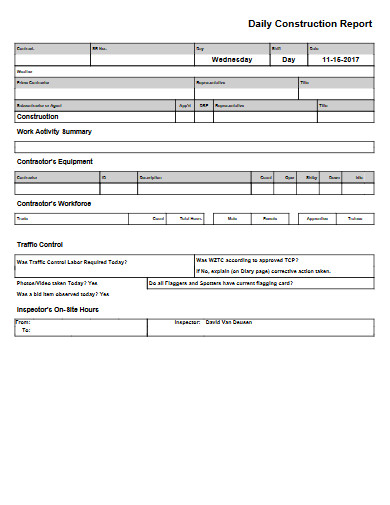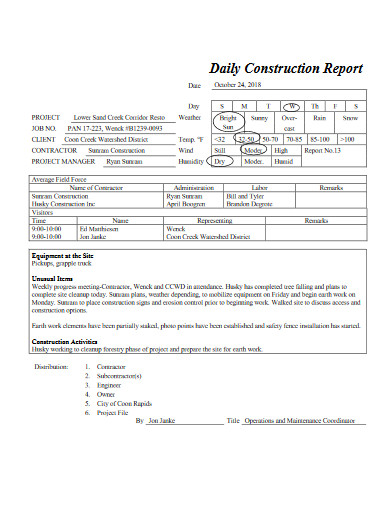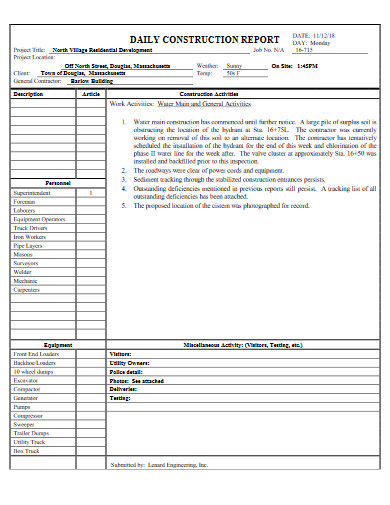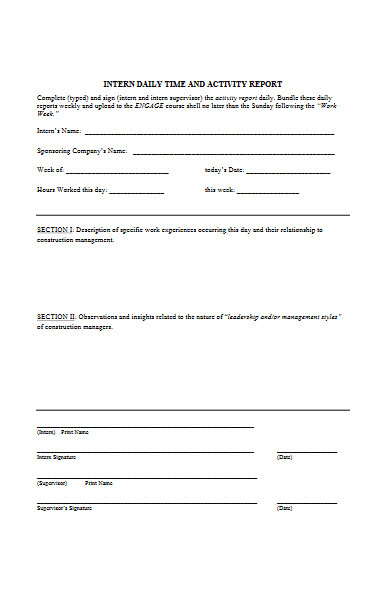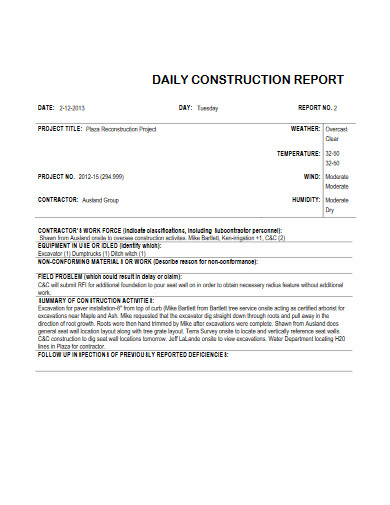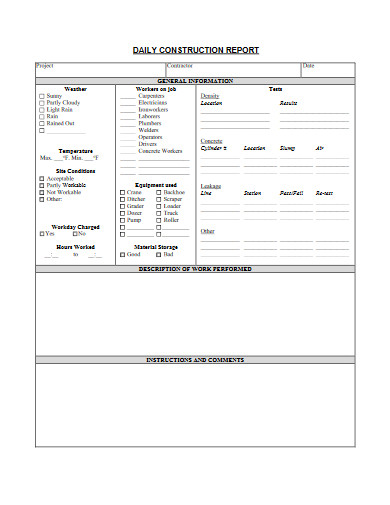15+ Daily Construction Report Examples to Download
As part of the construction general contractors and subcontractors’ management responsibilities, they have to make a daily written report for the stakeholders and the project owners. But for them to be able to do so, they have to conduct a field inspection on their respective construction sites. The observations on the laborer’s daily tasks and schedules are then used to keep track of the job progress. Overall, these construction logs make sure that the construction businesses’ operations are continually advancing according to plan. If you’re looking to make a construction daily report, then you shouldn’t miss our highly-relevant article and examples! Make them as reference and experience convenience in preparing one!
15+ Daily Construction Report Examples
1. Daily Construction Report Template
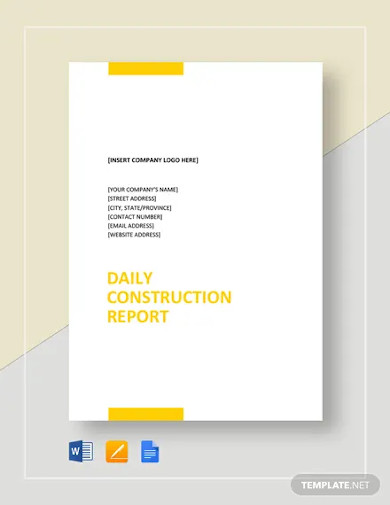
2. Daily Construction Report Sample
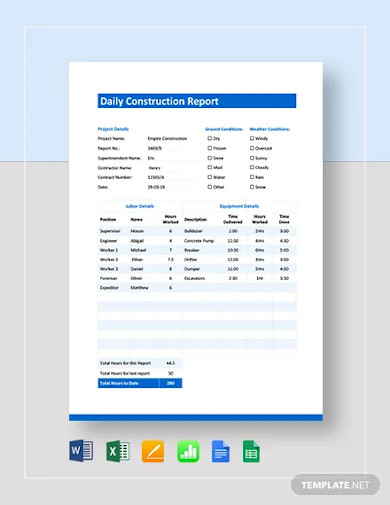
3. Daily Construction Activities Report Template
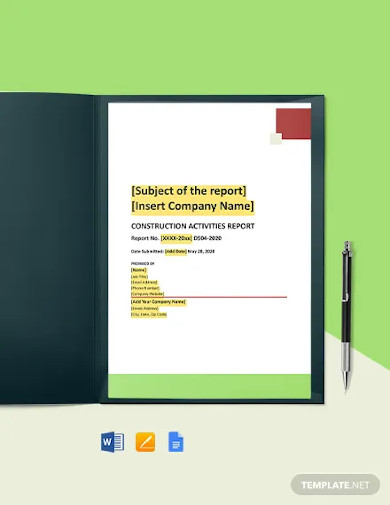
4. Construction Daily Quality Report Template

5. Free Daily Construction Report Template
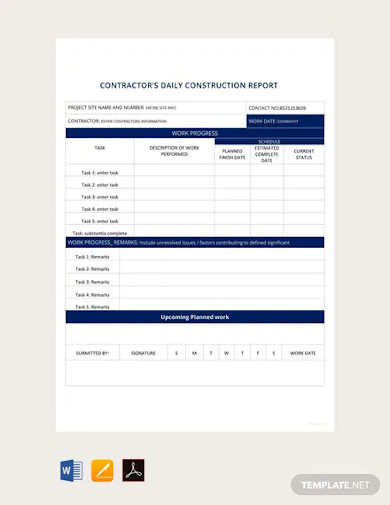
6. Free Contractor Daily Construction Report Template
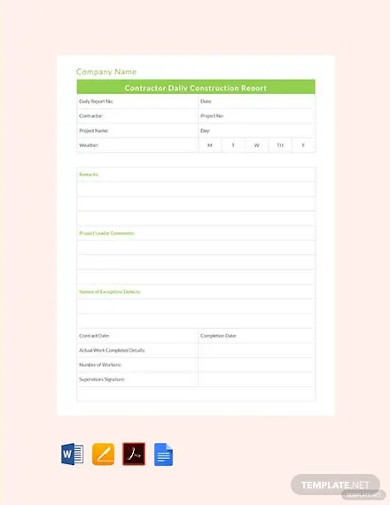
7. Free Daily Construction Work Report Template

8. Free Daily Construction Activity Report Template
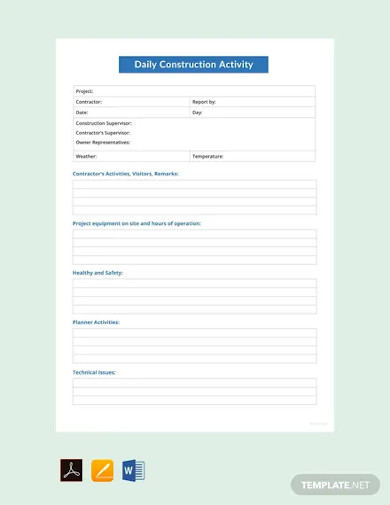
9. Daily Construction Report Form
10. Contractor Daily Construction Report
11. Daily Construction Report Example
12. Sample Daily Construction Report
13. Daily Construction Report in PDF
14. Daily Construction Activities Report
15. Apartment Daily Construction Report
16. Resident Inspector Daily Construction Report
What Is a Daily Construction Report?
A daily construction report refers to a document that helps identify and investigate issues, as well as track the daily construction operations. According to Levelset, this type of report assists everyone who is involved in a construction project to understand the productivity, performance, and progress of a specific work. With that being said, construction firms deemed it as essential paperwork. It’s so important that a failure to produce one will affect the overall project in the worst way. For instance, small risks that should’ve been identified earlier would grow to larger in the absence of the report.
The Best Practices in Using a Daily Construction Report
Daily construction reports are highly required by most construction project owners or stakeholders. And, they want them to be submitted concisely and quickly. Below are some of the best practices when making a daily construction report that can help you speed things up without compromising quality.
1. Include Every Significant Detail – Daily construction reports are not just tools to document erroneous processes and non-adherent activities. They should include every work-related happenings that happened during the day.
2. Submit Report On Schedule – The details written in daily construction reports are important in determining what actions to implement in the following days. This is why they should be submitted as soon as they’re completed to give the stakeholders some time to review and plan.
3. Present In a Straightforward Manner – Compose every detail of your daily construction report in the most simple way possible to avoid any confusion. Making your report in the form of a checklist is highly recommended.
4. Use Software and Preformatted Documents – By combining the utilization of word processing software products and ready-made documents, you can finish your daily construction reports in no time.
How To Prepare a Daily Construction Report
As mentioned above, using preformatted documents is highly convenient for those who are assigned in printable report writing. But if you don’t have a template of your own yet, then our outline below will set things up for you. Check them out below.
1. Provide Basic Information
The basic information of a daily construction report consists of the project name, number, address, report author, and report date. This will help the construction firm in filing the report in the right data inventory.
2. Describe the Weather Condition
Delays frustrate projects. In construction, bad weathers are the most common causes of delays. Describing the weather condition in each of your daily construction reports can help stakeholders reason out to clients why some activities are slowed down by why some schedules must be postponed.
3. Record the Labor Time
You should also include in your report the number of workers present in the construction site, the hours they spent working, and the tasks they carry out. This is intended for your protection against laborer-related disputes, as well as to assist any compensation plans.
4. Enumerate and Define Tasks and Their Progress
After recording the tasks that the laborers carry out, define them one by one. Then, present their current status. A good example is writing down the roofing activities at 70% to completion.
5. Note Down the Used and Received Equipment
Other things you should be taking into account are the equipment that is being used and received. By taking note of these items, you make the inventory management more convenient. Also, this step is necessary for developing construction invoices.
6. Log Risks, Issues, and Delays
Potential risks, identified issues, as well as the delays and their corresponding causes must be documented and reported to the stakeholders immediately. This is so actions to prevent, mitigate, and eliminate will be planned and implemented at once.
7. Set Safety Status and Accidents
Though there’s a need for you to make a separate construction incident report, you still have to record any accident in your daily construction report. The safety of laborers is one of the most important things to consider in any line of business. For this reason, it should be included in every report.
FAQs:
What are the common problems executives face in reports?
In his article for ClearPoint Strategy, Pierre Leconte shared that the common problems that most executives face in reports include the following:
– Inconsistency in stating the objectives
– Incomplete information
– Irregular styles
– Unsuccessful generalization
– Difficulty in navigating some information
– Poor organization of thoughts
– Information overload
– Do not follow standard flow
– Inaccessible attachments
– Grammatical errors
What are the common mistakes report authors commit?
Technical writing isn’t easy. So it won’t be a surprise when authors of formal reports commit mistakes. Below are the common mistakes authors of reports usually commit.
– Failing to give off the necessary information
– Non-observance with the standard flow
– Putting too much information
– Avoiding making reports
– Disregarding mistakes
Are there any reporting tools?
Yes, there are. Some of the best include Tableau, Whatagraph, Power BI for Office 365, LiveReport, and Google Data Studio.
A daily construction report is an essential component of documentation procedure for construction firms. Because of the details it tends to keep, these corporate entities ensure their future references for research, analysis, and fact-based actions to performance, productivity, and construction designs. American management consultant Peter Drucker once said, “What gets measured, gets managed.” So, if you’re looking for the best multi-functional tool for your construction site’s monitoring, a daily construction report is perfect for you.



